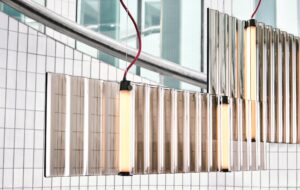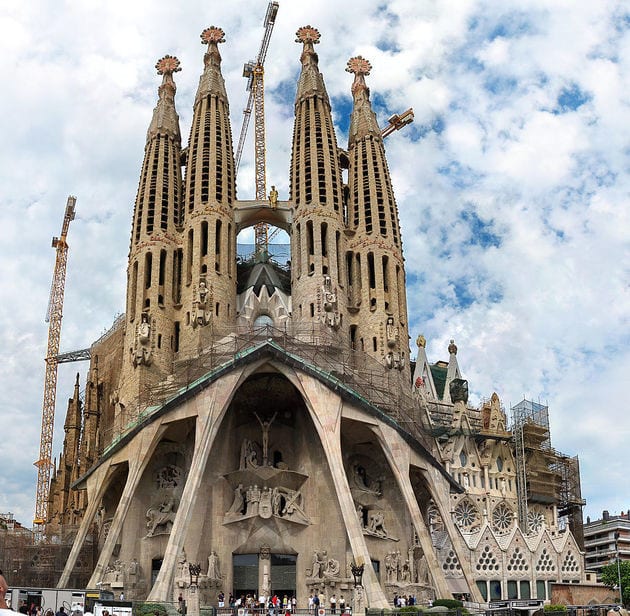 Sagrada Familia. Photo by Flickr user Larry Koester
Sagrada Familia. Photo by Flickr user Larry Koester
Construction began almost 138 years ago on the mammoth and absurdly intricate Sagrada Familia in Barcelona, the world’s most notorious incomplete building
Loved and hated in almost equal measure, architect Antoni Gaudi’s elaborate Sagrada Familia is Spain’s most iconic building, visited by more than three million people every year. These visitors fund its ongoing construction. It is estimated that the church will only be completed in 2026 at the centenary of Gaudi’s death. Even then, certain decorative elements will still need to be added. Gaudi famously said ‘my client is in no hurry.’ God, he presumed, has all the time in the world. When it is finally completed it will have taken 10 times longer to build than the Great Pyramid of Giza.
The Sagrada Familia has been controversial from the very beginning. It started when a layman bookseller named José María Bocabella bought a plot of land and commissioned the design of a lavish Roman Catholic basilica, funded by private donations. Then and since, no government or church body funding has ever been attachted to the project.
The original architect was Francisco de Paula del Villar y Lozano, who resigned in 1883 just one year into construction. Gaudi took over and though he maintained a traditionally Gothic-style Latin-cross plan, he otherwise radically revised the designs. Gaudi’s temple was a fusion of Gothic precedent and hs own distinct Art Nouveau aesthetic. From 1914 onwards Gaudi gave up all other projects and dedicated himself exclusively to the Sagrada Familia.
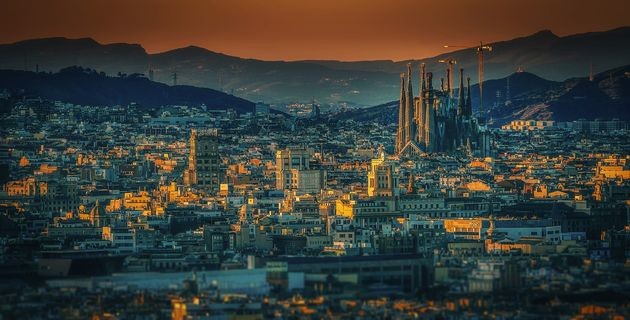
Apart from its intensely complicated design, construction over the last century has been interrupted and delayed by the Spanish Civil War and inconsistency in the funding. Recent advances in technology such as 3D printing and machine stone-cutting are now speeding up the final stretch or work. According to the current chief architect Jordi Fauli, the construction reached 75 percent complete in October 2015.
Gaudi knew that the Sagrada Familia would be a marathon project and he planned for the construction to happen in phases, intending to complete certain significant sections under his own watch so that these could set the standard for the rest. His design was also fluid, and he would often make changes after visiting the site.
The design is comprised of multiple towers and facades that are crammed with ornate sculptures and mosaics. 18 spires rise out of the cathedral, each symbolising one of the Twelve Apostles, the Four Evangelists, the Virgin Mary and Jesus Christ. The spires increase in height to demonstrate the hierarchy of these religious figures. The spires of the Four Evangelists will be topped with sculptures in their traditional symbols – a winged bull for Saint Luke, a winged man for Saint Matthew, an eagle for Saint John, and a winged lion for Saint Mark. The Jesus Christ Tower will be topped with a Gaudi-style cross.
Currently only eight of the spires are finished. The tallest tower will be for Jesus Christ and will measure 170 metres, only slightly less than the height of Barcelona’s Montjuïc Hill. Gaudi intended that the towers should not exceed that hill, saying that nothing made by man should surpass what was made by God. At 170 metres the Sagrada Familia will be the tallest church in the world. There are plans for tubular bells to be installed in each of the spires.
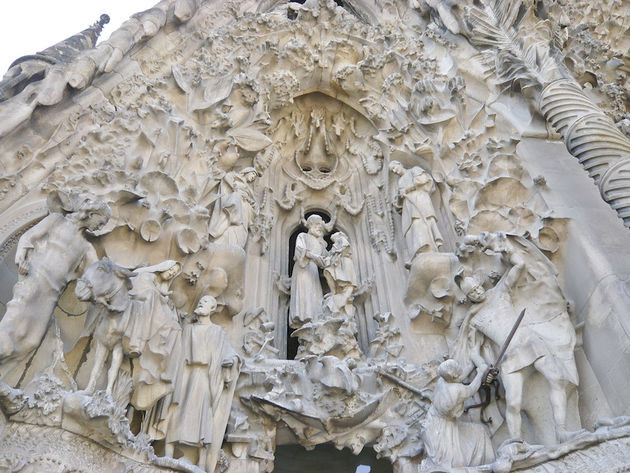 Sagrada Familia’s Nativity Facade. Photo by Flickr user Andy Mitchell
Sagrada Familia’s Nativity Facade. Photo by Flickr user Andy Mitchell
The church will have three monumental facades: the Nativity Facade to the East, the Passion Facade to the West and the Glory Facade to the South. The Nativity Facade was the first to be finished and is dedicated to the birth of Jesus. It is covered with symbols from nature, each with their own meaning, and faces the sunrise to represent birth.
The Passion Facade went into construction in 1954 and sculptors began to shape its various scenes in 1987. In comparison to the Nativity, it is austere and hard, featuring tormented-looking figures, including representations of Christ being whipped and of Christ on the cross. Portraying the sins of man, Gaudi intended that this facade strike fear into the viewer and it faces the setting sun to evoke death. There are also scenes of the Last Supper, the Kiss of Judas, and the Passion.
The Glory Facade only entered construction in 2002 and is the largest of the facades. It signifies the path to God and eternal glory in heaven, though it also dedicates a significant amount of space to representations of purgatory and hell. The facade has a total of seven doors, each representing one of the seven sacraments.
The temple’s interior consists of a central nave to accommodate the congregation flanked by two aisles that extend out to form the arms of a traditional Latin cross. At the top of the cross is a classic apse.
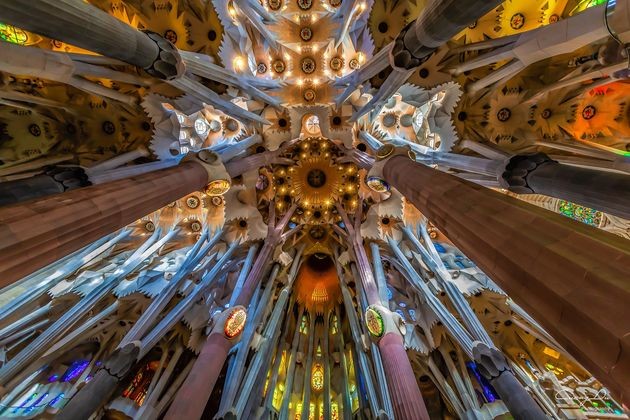 Sagrada Familia’s “forest” of columns in the central nave
Sagrada Familia’s “forest” of columns in the central nave
Throughout the design of the Sagrada Familia, forms from the living world are abstracted into columns, vaults and the geometric shapes that make up its structure. In the main nave, 45-metre columns branch out like trees as they reach the ceiling and skylights in the “forest’s” canopy bring light into the building through gold and green glass tiles. The central nave was completed in 2000 and since then the focus has been on the construction of the transept vaults and the doming apse.
The building has had numerous detractors and supporters. While Bauhaus founders Walter Gropius and Le Corbusier praised the intricacies and technical excellence of Gaudi’s pinnacle project, it has had many critics. George Orwell called the temple ‘one of the most hideous buildings in the world’ and hoped the Spanish Civil War would damage it beyond repair, while Salvador Dali spoke of its ‘terrifying and edible beauty.’ When Gaudi, died he was buried in his church. He was proclaimed a saint by the people of Barcelona and was nicknamed ‘God’s architcect.’ A campaign to have him beatified has been running for over 20 years and only a few years ago Pope Francis met with the association behind the campaign and voiced his support.
Like it or loathe it, the Sagrada Familia remains one of the most fascianting and distinctive buildings of the twenteith century.






